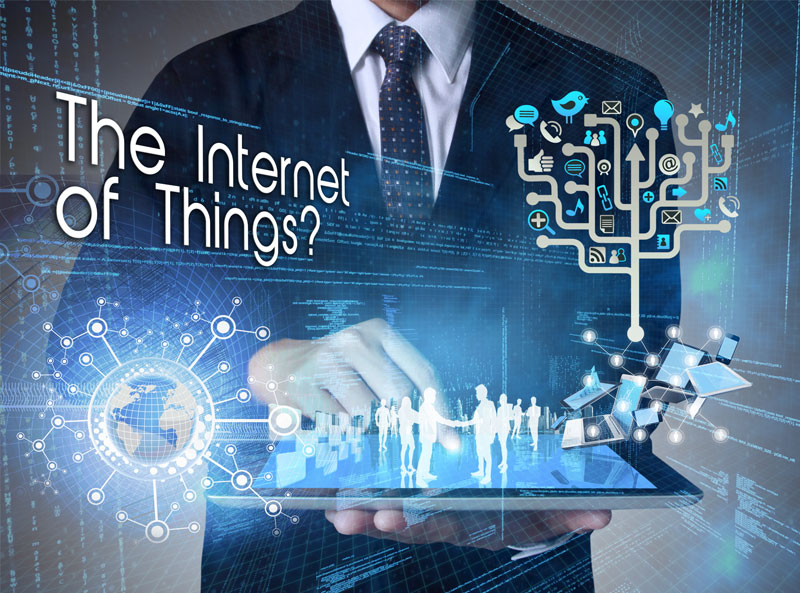-
Call Us:1.800.561.4019
Newsletter
For a Free Quote...
Latest Blog Posts
Blog Categories
Telnet Networks News
Are You Ready for the Internet of Things?
 The Internet of Things is upon us. How can enterprise network administrators brace for impact?
The Internet of Things is upon us. How can enterprise network administrators brace for impact?
Discussion of the Internet of Things – a world of connected objects, where your refrigerator sends you a text message when you’re low on milk and your basketball generates a quasi-scouting report when you’re done shooting hoops – has so far resonated most in the service provider space. What services can I sell to enable this? What infrastructure will I need to keep everything connected?
But a similar conversation is now beginning in the halls of enterprise IT.
The huge amount of data the Internet of Things promises to generate will impact enterprise IT over the next decade and beyond. While specific needs and objectives will vary by industry, some universal challenges will undoubtedly arise.
In the enterprise, device miniaturization plus plummeting technology costs equals new generations of networkable devices. Assisted living healthcare providers can use data from sensors in a home to remotely and proactively assess a patient’s condition. Perhaps a window or door has been left open for a long time in the middle of winter. Perhaps the refrigerator door hasn't been opened for over a day. Perhaps the patient hasn't risen for a prolonged period of time, as reported by a "smart" mattress pad.
All of this data, when collected and analyzed, can predict or identify problems and provide appropriate and expedient responses. And as more functionality becomes embedded in connected devices, enterprises will discover increasing opportunities to enhance the services they provide, improve security and identity management, and simplify billing and payment transactions. But these opportunities aren't only limited by imagination. Practical matters associated with the networks connecting these devices and delivering this data can impose limitations on the potential of the Internet of Things, too.
So how does the enterprise network need to change to support this onslaught of data? Here's one major consideration: up to this point, most communications networks have relied on proprietary protocols and interfaces and private networks. You can’t very well expect "things" to connect to each other over networks they can’t access. Here's where the IP network comes into play. Whether wired or wireless, an Internet Protocol-based network is necessary to provide the scale and ubiquity to seamlessly connect people, devices, and systems.
Additionally, all the traffic these "things" generate now shares the same networks as workplace computers, tablets, and smartphones accessing email, streaming content, and downloading files. The networks themselves must become more intelligent to effectively prioritize data traffic. Configuring the network to deliver the performance required for identifying, treating, and isolating data of value is paramount.
While sensor networks have existed for some time in various verticals, Ethernet, 3G, LTE, and WiFi are all becoming ubiquitous. Machines and sensors will be connecting with the same technology and on the same networks that enterprises and consumers use today.
To extract maximum value from the Internet of Things, enterprise IT organizations will have to keep pace with new business goals, ensure reliable and predictable network connectivity and performance, and implement the right solutions to refine gathered data nto useful information. In practical terms, some of the technical and commercial considerations include:
- Network Access. Can devices connect to the IoT reliably? Evaluate building sites, wireless network design, and RF engineering wherever possible, and include 3G, 4G, Wi-Fi, and etc.
- Mobile Device Management. How do you effectively support and control mobile and fixed wireless devices connected to your network? BYOD policies and the proliferation of additional connected devices/sensors compound the complexity of this task.
- Performance Management: Network performance management will be crucial to leveraging the Internet of Things. While the bandwidth consumed by sensors connected to the IoT may be dwarfed by other forms of traffic, such as mobile video, some IoT data is latency-sensitive. Moreover, on a converged wireline/wireless IP network, traffic generated by a variety of applications will compete for network resources. Protecting quality of service for business-critical applications will demand application and network performance management solutions combined with scalable mechanisms to access, identify, and classify devices, users, applications and the network resources consumed (or needed) for optimal performance.
- Security: The Internet of Things will create an explosion in data, some of it personally identifying or otherwise sensitive. Enterprises will need a comprehensive strategy to protect that data at rest and in motion. In addition, IoT security strategies demand mechanisms to ensure secure access to network resources, combined with policy management strategies that may need to be user-, application-, device-, and network-aware.
- Data Storage: Those zettabytes of IoT data will need to be stored somewhere. Enterprises must weigh the performance and economic tradeoffs of options like spinning hard disk drives and solid state storage technologies. They must also be able to implement and manage hybrid storage environments to meet the needs of various applications and support both traditional structured data and the growing volumes of unstructured data incoming.
- Disaster Recovery and Business Continuity. Given the volumes of data created, enterprises will need to implement reliable DR and BC processes, taking into account recovery point objectives (RPO) and recovery time objectives (RTO) per application. This will drive the implementation of high-availability data center architectures using asynchronous and synchronous replication, likely using geographically redundant data centers. All this results in high volumes of delay for sensitive data traversing wide area networks. Enterprises will need to determine the right mix of strategies balancing the performance and costs associated with various WAN strategies. Options will include: purchasing managed wavelengths (DWDM), Carrier Ethernet and IP/MPLS VPNs from service providers. In some cases, larger enterprises may choose to invest in or lease their own dark fiber network between data centers.
- Operational Scaling: Private, hybrid, or public cloud? While the right economic and operational strategies will vary by vertical and company, all enterprises will need to determine how much (none, some, or all) of their IoT functions will leverage cloud scaling. Some enterprises will opt to keep all functions, including device and network management and big data analytics, in-house. Others may opt to partner with service providers for a range of functions, such as mobile device connectivity, offsite disaster recovery, or SaaS for analytics.
Service providers, network operators and network equipment manufacturers will have their hands full enabling the Internet of Things over the next few years. Cisco estimates that it’s poised to be a $19 trillion market. That’s huge, and we’ve already begun to see some early traction: Google just acquired Nest for $3.2 billion to bolster its connected-home play. There’s a company that makes a smart onesie for babies so parents know if he or she has rolled over. Cities are becoming smarter and more connected than ever. While the enterprise-related discussion might not be as quirky as what we’ve seen on the consumer side, rest assured that a shift this large will definitely require some thinking on our side as well.
Thanks to Enterprise Networking Planet and JDSU for the article.
When you subscribe to the blog, we will send you an e-mail when there are new updates on the site so you wouldn't miss them.





Comments